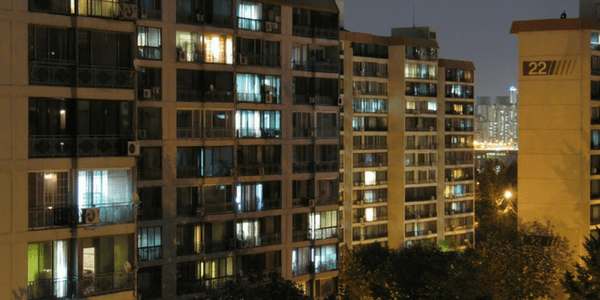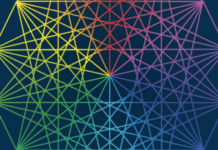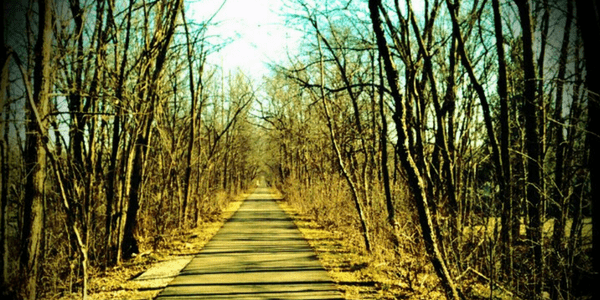
As the cycles turn and the seasons advance, our need for connection deepens. Our magick may be borne of our dreams, but more often than not, it is most powerfully activated in the material world around us. It is the world that plays the stage to our dreams, ambitions, and goals, and is indistinguishable from the concept of nature. It is our connection to nature that tethers us to the real, not nature in some romantic, pastoral ideal, but the lively, messy, and sometimes ugly systems of mutuality we play an integral role within.
How can we strengthen and deepen our connection to nature outside the cliched notion of “getting away from it all?” Is nature the sole domain of forest, jungle, or ocean, or does it also encompass the sometimes alienating environments of city and suburbia?
I contend that establishing a true and lasting connection to nature begins exactly where you are. Our bodies and our homes are ecosystems unto themselves. The micro reflects the macro, and so we may begin the flirtation with Mother Nature by looking inwards.
Related: The earth is a witch: Ecofeminism, deep ecology, and the Pagan movement by Thomas H. Harbold
The body within nature
Much of our attitudes about nature are reflected in the ways we see our bodies. We separate ourselves from the world around us, hermetically sealing away the more animal parts of ourselves into something palatable, controllable. It is no coincidence that most movements directed at returning to the land also focus on limiting the interventions to and in the body. Many investigate different hygiene and beauty practices, not to be more “natural” or superior, but rather to become familiarized with the body as a natural phenomenon.
Our bodies happen beyond the scope of our management and organization. They have organized themselves to survive, and it is surprising how well they can do so without the minute interventions of our modern aesthetic routines. Part of this exploration of the body ultimately involves a development of comfort around the products of the body. Those things that we define as “not me” and are culturally discarded are artifacts of our existence as well as a part of the ecosystem that is your body.
Something so mundane as body hair and body odour can be treated similarly to toxic waste. That is not to say that we must embrace the things that gross us out about life, but rather it benefits us to resist shying away from acknowledging them as a part of our holism, without judgement. We may not want to revel in all the products of our being, but we don’t need to be disgusted by them either. We can begin to untie the knots of socialization to become less disgusted by the natural function of our bodies. We can make alterations without rejecting our base nature. In our first step, we can learn to be comfortable with our totality.
Second to this, we need to acknowledge the barrier of our skin, not as the end of our dimension, but as a permeable gateway between ourselves and the world around us. Everything that we touch becomes, in some small way, a part of us. There is no ultimate “out there”. There is no “away”. We are all connected in one large ecosystem called the Earth, and even the Earth is visited by fragments of other worlds — solar winds, radiation, asteroids. We cannot seal ourselves off from the world around us. All acts of consumption and waste exist in conversation with a larger system.
Personal decisions are not always entirely personal. Drugs we take are found in the water supply. Some beauty products contain microbeads, which are having a huge environmental impact. Go into your bathroom, look at some of your beauty and personal care products, and research the ingredients. So many of the items sold in stores have ingredients that are carcinogenic, health hazards, or environmentally destructive. Remember that what you place on your skin seeps into your system. There is no outside and inside — everything outside of us comes in and vice versa. If your body is a temple, what is it a temple to? Do you treat your body with respect? Do you consider the impact of your personal decisions on the environment?
Take stock of the things that you put in and on your body. If you research the ingredients in your food and personal care products, do you like what you see? How can you take on small step to living a more sustainable lifestyle? It can be fun and interesting to experiment with new foods and new routines. You can get a lot of inspiration from people who are doing the work. Education allows you to make informed choices about your lifestyle. You don’t need to change everything in a day, or even at all — time, money, and ability can be very real barriers. But living more sustainably can also lead to some health benefits, both mental and physical. Getting down to the root of our existence, understanding what we need to thrive and what hurts us or holds us back, allows us to grow, becoming stronger, more resilient people.
Related: How to talk about health and magick, shame-free by Donyae Coles
This thinking leads us to consider the effects of our choices, but also the collective onus we have as humans to care for and feed the ecological cycles of our planet with materials that lead to homeostasis in our shared environment. We cannot ever truly extricate ourselves from nature, and so any return to the natural world will necessarily be an act of remembrance — remembering that we are not separate, but part of a never-ending loop from birth to death, a part of everything.
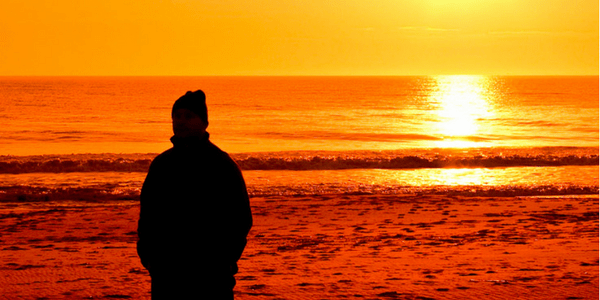
Home as ecosystem
That said, as individual participants in a world ecosystem, it falls upon us to consider the products of our lives. What comes into our own personal ecosystem and what is produced therein? What do we seek out to feed our bodies and souls, and what do we throw away, giving up to the care of others?
The responsibility for the human project is not ours to bear, but to consider our part in it, to consider our complicity in acts of environmental pollution and degradation, is our duty. We need not blame ourselves for our powerlessness in changing the way things are, but we can take stock of the decisions we make day to day and how they impact the world around us.
What if there is no “away” and every item we throw out is our personal responsibility? Should we make different decisions as to how we consume the things in our lives? Does it make a difference as to what we discard and what we use again, of the effort we save and the worth of a piece of packaging? Our homes and offices are not located in some netherworld, detached or floating above the natural world. If they seem compartmentalized, it is by design that they are so. We are indelibly connected, threaded into our environments in all acts. Every breath, every glass of water, every meal, every thought and dream is an act of taking in, transforming, and producing. What is waste to one must necessarily be food to another. It is the way the cycle continues.
So how is it that we can begin to take stock of our place in the revolution, the continuing cycle of production and decay that keeps the world alive? Take and inventory at the limit.
Say the limit is at the door of my house. If my house is the ecosystem, I can formally or informally track what comes into my house and what leaves. This includes what I pour down the drains, what I throw into the garbage, and what I put into the air. Once I begin to identify the artifacts that I am personally responsible for releasing into the environment, I can begin to identify unnecessary items, items that could easily be done without or replaced with something else.
For example, if I want my home to smell nice I could use an air freshener, which may be contained in plastic and could emit toxic substances into the air, or I could use an essential oil in a glass bottle that can be recycled, or I could use lemon water in a spray bottle to both clean and freshen. I could also simply open a window. How important is the transient smell of a room, how urgent is it that I improve it, and how long can I reasonably wait for a smell to dissipate? These aren’t judgments as much as they are questions.
Our inventories will be our own, and our needs and desires will be unique to each of us. What is tolerable for one person will be intolerable to another. We each have unique needs and must honour our own comfort while we consider the balance of our ecological systems. We must balance our discomfort or inconvenience with the importance of the lives and comfort of our grandchildren and great-grandchildren.
Related: Domestic magick: The lost art of homemaking by Chrysanthemum White Alder
Triggering the memory
Find a comfortable place in your home. It may be useful to find some natural objects that connect you with the elements and place them around you, on an altar, or to hold them in your hands. Close your eyes and feel the space around you. Begin to send your spirit back in time, before the construction of the building you are in, before the settlers arrived to establish your city or town, when the land that you live on was wild. This was the state of the land for millennia before we arrived and someday in the distant future, it will return to it’s wild state.
We are visitors to this land. Our lives and our homes are temporary. They require constant maintenance and repair and at some point, they return to the land and become a part of it again.
Remember how your home has not changed significantly from the time it was a wild place. Now, it is the home of a human animal, not dissimilar from a warren or a nest. Remember how you are a part of all of this and that building a home comes naturally to us. We are a part of the wild Earth. We are her children. The space you are in is a part of nature.
Keep a place in your home with objects gathered from outside. Use this place to remind you of your connection with wild nature, to trigger your remembrance that there is no distinction from our homes or our cities to the forests, caves, and oceans. We are all of one.
Dismantle the illusion
In the long-term, we must begin to invest in a process of dismantling those things that alienate us from ourselves and from the world around us. We can begin to look at wild nature and mimic her in our ways, bringing the beauty, calm, and simplicity of self-organizing systems into our own lives. We can learn from the living things around us and learn how to live with them, side by side, minimizing the amount that we need to impose our will in order to keep flow and harmony.
If we trust in the organization of nature, learning about its ways in order to support its ideal functioning, we can give ourselves a break. We can allow for the systems of the natural world to take place. If we are in harmony with them, we need not do all of the work ourselves.
We can welcome the natural world into our homes and our lives by changing the way we live. Some people can feel comfortable making homes that blend more seamlessly into the world around them. Some can afford to experiment with tamped earthen floors, gardens, permaculture, grey-water collection. Maybe you can afford to investigate and put into action some of these principles and maybe not. We are not all going to be in a comfortable socio-economic position with the time and money to cultivate new ways of living.
What we can do is learn from people who make this their life’s work, and use this knowledge to make more informed decisions. You could begin to bring nature in by growing herbs and learning herb lore, you may be able to start a balcony garden. You may want to invest in local food economies or get involved in food security in your communities.
You may be interested in water rights, pollution, green initiatives, natural design, farming, hiking, wild foraging, or any number of things. We can’t all do everything, and we can’t all afford the luxury of de-linking from systems of capitalist production. We can all afford gentle and persistent investigation, of small ways of welcoming that connect us to the air, water, and soil, allowing the world to breathe and relax, allowing for a return of the wild into our lives. We can all afford to open a door to wild nature.
Related: 5 ways to connect with nature as an urban Pagan, by Samantha Bell
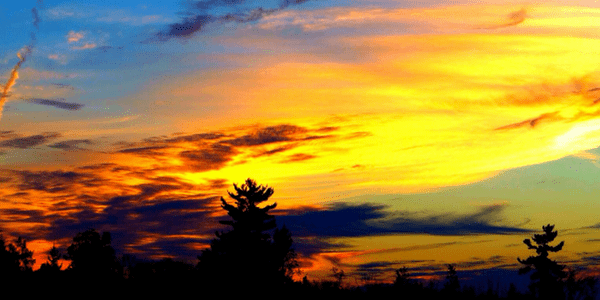
Conclusion
Returning to nature is not only important as a spiritual or political practice, but also as an important way for us to ground our magick. Living in connection with living systems allows us to lean on the support of a thriving and powerful consciousness that extends beyond our personal limitations.
Our ability to recognize and work with the real is what gives magical practitioners their special insight. Our attempts to see beyond the veil are what keep us curious as to the true nature of reality. One significant aspect of this veil is our own illusions, our illusions of separateness.
If we can learn to live a connected life, not only in theory but in practice, we ground the work of interconnectedness and root it within our very bodies. We need not remind ourselves to connect with nature if we learn to see ourselves as inextricably part of the natural world. If we weave our lives in such a way that we are living our connection, we open a channel to wild nature, to hear her cries and whispers, and to also be able to respond.
Image credits: noodlesthekuppy, Geoff LMV, Minyoung Choi, Rob Sommerville


